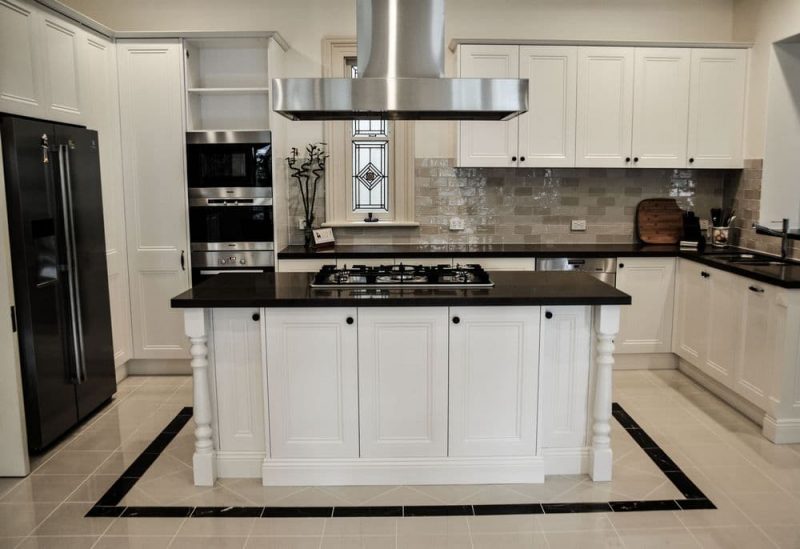7 Ways to Make Your House Healthy and Safe
A home should serve as a haven for families. It’s a place where you can give your little ones peace of mind knowing that they’re safe from harm.
Unfortunately, this isn’t the case with many households. A report from Safe Kids Worldwide revealed that more than three million children get hurt at home every year.
Young children can spend up to 90 percent of their time indoors. A healthy home environment, therefore, is crucial for kids. If you need help keeping your household safe and healthy for your little ones, keep the following suggestions in mind:
1. Use Technology to Your Advantage
Machines, including robots, don’t just make life comfortable and convenient. They can help keep your children safe, as well.
Machines equipped with a state-of-the-art robot vision system, for instance, can detect obstructions and moving objects that can be harmful to people. A good example is a child care robot that helps parents better monitor their kids while they’re away from home.
2. Clean Your Home Regularly
You can make your home a great place to live by keeping it clean and organized.
Cleaning goes beyond getting rid of dirt and germs. It makes your surroundings more pleasant and shows how much you care for your family.
This household chore, though, is easier if you do not have to declutter every step along the way. Make keeping things in their proper places a habit and involve every family member in the process. There should not be any excuse for anyone to not pitch in unless they’re sick or physically unable to get any work done.
You can even teach young children to at least put their toys back into their toy boxes. Get everyone involved in cleaning and get organized.
3. Keep an Eye Out for Windows
Thousands of children end up in the hospital after falling out of a window. Installing window guards, therefore, is vital to prevent accidents.
Window guards are rows of bars that you screw securely into the sides of window frames. An adult can release these bars quickly in the event of a fire.
Apart from installing window guards, you need to place cribs and other pieces of furniture away from windows. Babies and toddlers can inadvertently strangle themselves by cords on shades and blinds. If possible, consider using cordless window coverings in your children’s bedrooms.
4. Ditch Pesticides
Pesticides kill ants, mice, roaches and other insects. Chronic small exposures and overexposure, however, may put your little ones at risk of health problems, including brain development problems, learning disabilities and asthma.
These chemicals are costly, as well. You can easily shell out a hundred bucks just to buy them.
Instead of investing in pesticides, focus your efforts on prevention. Some simple measures you can implement include the following:
- Sealing cracks that serve as a point of entry into your house
- Keeping food containers and packages tightly closed
- Cleaning up all food residue
- Washing dishes carefully
5. Perform Regular Home Maintenance and Repairs
If you’ve committed to repairing that hole in the wall or fixing the wire hanging out the roof, you’ll need to follow through with that promise. Allot time from your busy schedule to repair and fix your home. Take the time to polish your floors, check the light bulbs and wirings for problems, have your chimney cleaned and more.
6. Renovate Carefully
If you’re living in an old home, such as a house built before 1978, there’s more likely lead in the paint under the top coats on your windows and walls. Lead may also be present in old floor varnish.
When paint begins to chip or you stir up lead dust during a renovation, the toxic particles place your little ones at risk of learning and development problems.
You, therefore, should hire a reliable contractor who carries a certification in safely removing leaded materials. What’s more, get in touch with the National Lead Information Center to find an inspector or a contractor that can effectively measure the levels of lead in your home or water.
7. Be Prepared for Fires
Little ones are more likely to perish in a residential fire than adults or older children, as they will have a difficult time escaping on their own. You can prevent unwanted fires in your house by installing a smoke alarm in various areas of your house, including the bedroom and the basement.
Apart from these devices, you should have at least one multipurpose fire extinguisher every 600 square feet of living space. Make sure you know how to use this tool when you come across a fire.
Making your home healthy and safe doesn’t have to be complicated or expensive. Just a few changes can boost the health of your home and make it a good place to live for your little ones.




